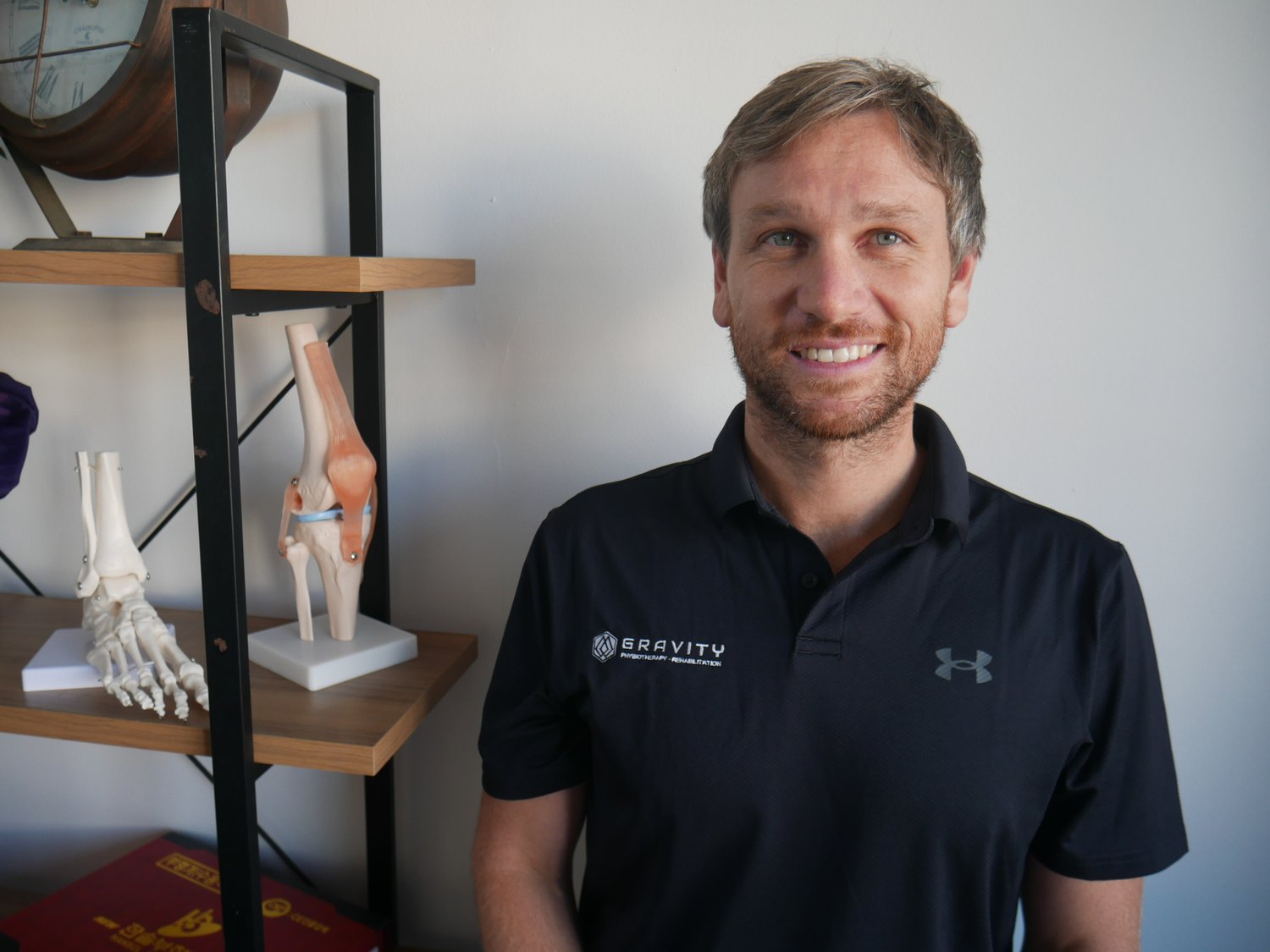Runners Knee Slowing You Down?
Find Relief with Physio for Knee Pain
Understanding 'Runner's Knee'
If you're experiencing pain at the front of your knee or around the kneecap (patella), you might be dealing with a common injury known as 'Runner's Knee' or 'Patellofemoral Pain' (PFP). Another running-related condition, called Iliotibial Band Friction Syndrome (ITBFS), can cause pain on the outside of the knee. Both conditions are prevalent among runners and can become problematic if left untreated for too long.
Symptoms and Causes
PFP is characterized by pain behind or around the patella during weight-bearing activities or flexion movements of the knee. Surprisingly, this condition can affect more than just runners. It can also be triggered by activities such as squatting, lunging, stair climbing or descending, prolonged sitting (sometimes humorously referred to as 'movie-goers knee'), and, of course, running.
The development of PFP can vary due to its complex nature and the significant workload our knees endure during exercise. Several common factors that contribute to PFP include increased training loads, weakness or strength deficits in the knee or hip muscles (such as the Quadriceps, Gluteus Maximus, and Gluteus Medius), poor biomechanical patterns, and improper running technique. These factors place excessive stress on the patellofemoral joint, resulting in pain.
Differential Diagnosis: ITB Pain
When it comes to knee pain in runners, one common condition that often gets mentioned alongside 'Runner's Knee' is Iliotibial Band (ITB) pain. ITB pain, or Iliotibial Band Syndrome (ITBS), presents as discomfort on the outer side of the knee. It occurs when the ITB, a thick band of connective tissue that runs from the hip to the shin, becomes irritated and inflamed due to repetitive friction during movement.
ITB pain can be easily mistaken for 'Runner's Knee' because they both manifest as knee pain in runners. However, the distinguishing factor lies in the location of the pain. While 'Runner's Knee' typically causes pain around or behind the patella, ITB pain is felt on the lateral side of the knee. It often intensifies during activities that involve repetitive knee flexion and extension, such as running or cycling.
Physiotherapists play a crucial role in differentiating between 'Runner's Knee' and ITB pain. Through a comprehensive assessment, they will carefully evaluate the location of your pain, conduct specific clinical tests, and analyze your running mechanics to determine the primary source of your discomfort. By accurately diagnosing ITB pain, your physiotherapist can provide you with targeted treatment strategies and help you get back on track to pain-free running.
Running Biomechanics and Analysis: Identifying Poor Running Techniques
Running biomechanics refers to the study of how the body moves during running and the impact it has on performance and injury risk. Proper running technique involves optimal alignment, efficient muscle engagement, and appropriate foot strike patterns. Unfortunately, many runners unknowingly develop poor running habits that can contribute to various injuries, including 'Runner's Knee.'
One common running technique issue is overstriding. Overstriding occurs when a runner extends their leg too far in front of their body during the landing phase, resulting in a braking motion and increased impact forces. This can lead to excessive stress on the knee joint and surrounding structures, increasing the risk of developing knee pain.
This obviously an exaggerated overstride, but you get the gist..
Physiotherapists are trained to analyze running biomechanics and identify poor running techniques, such as overstriding. Through video analysis, observation, and assessment of your running form, they can pinpoint specific areas where improvements can be made. By identifying faulty movement patterns, such as excessive heel striking or inefficient stride length, your physiotherapist can provide valuable feedback and guidance to help you make the necessary adjustments.
To address poor running techniques, your physiotherapist may incorporate various strategies into your treatment plan. These can include specific exercises to improve strength, flexibility, and coordination, as well as gait retraining exercises aimed at modifying your running form. By working closely with your physiotherapist, you can gradually change your running mechanics, reduce stress on your knees, and minimize the risk of developing or exacerbating knee pain.
Remember, running technique changes require patience and practice. Your physiotherapist will guide you through the process, providing ongoing support, feedback, and adjustments as needed. With time and dedication, you can develop a more efficient and injury-resistant running style, allowing you to enjoy your runs with reduced risk of knee pain.
By addressing poor running techniques and optimizing your running biomechanics, you can not only overcome 'Runner's Knee' but also enhance your overall running performance and prevent future injuries. Consult with a physiotherapist who specializes in running analysis and biomechanics to receive personalized guidance and support tailored to your specific needs.
Managing Runner's Knee with Physiotherapy
The good news is that runner's knee or ITB pain can be effectively managed with the help of physiotherapy. A knowledgeable physiotherapist will provide you with valuable education, advice, and customized exercise programs to address your specific needs. Initially, the focus will be on reducing pain and symptoms through activity modification, as well as treatments like massage and taping.
Reach out to a physio and get bak in control of your runners knee pain
Your physiotherapist will assess your movement patterns to determine if any need to be retrained to relieve stress on the patellofemoral joint. Additionally, they will evaluate the strength of your hip and knee muscles to design a targeted exercise rehabilitation plan. A combination of hands-on treatment, taping, strength training, and load management forms the foundation of treatment for PFP in the early to mid-stages, before you can return to running or intense workouts at the gym.
As you progress in your recovery journey, your physiotherapist may introduce a specific strength and conditioning program or a running program tailored to your needs. If necessary, they may also provide guidance on technique correction. This comprehensive approach will help you regain strength, endurance, and confidence, allowing you to outrun your 'Runner's Knee' once and for all!
Don't let knee pain hold you back from your running goals. Seek professional physiotherapy assistance to overcome 'Runner's Knee' and get back on track to pain-free running!






